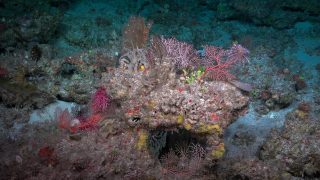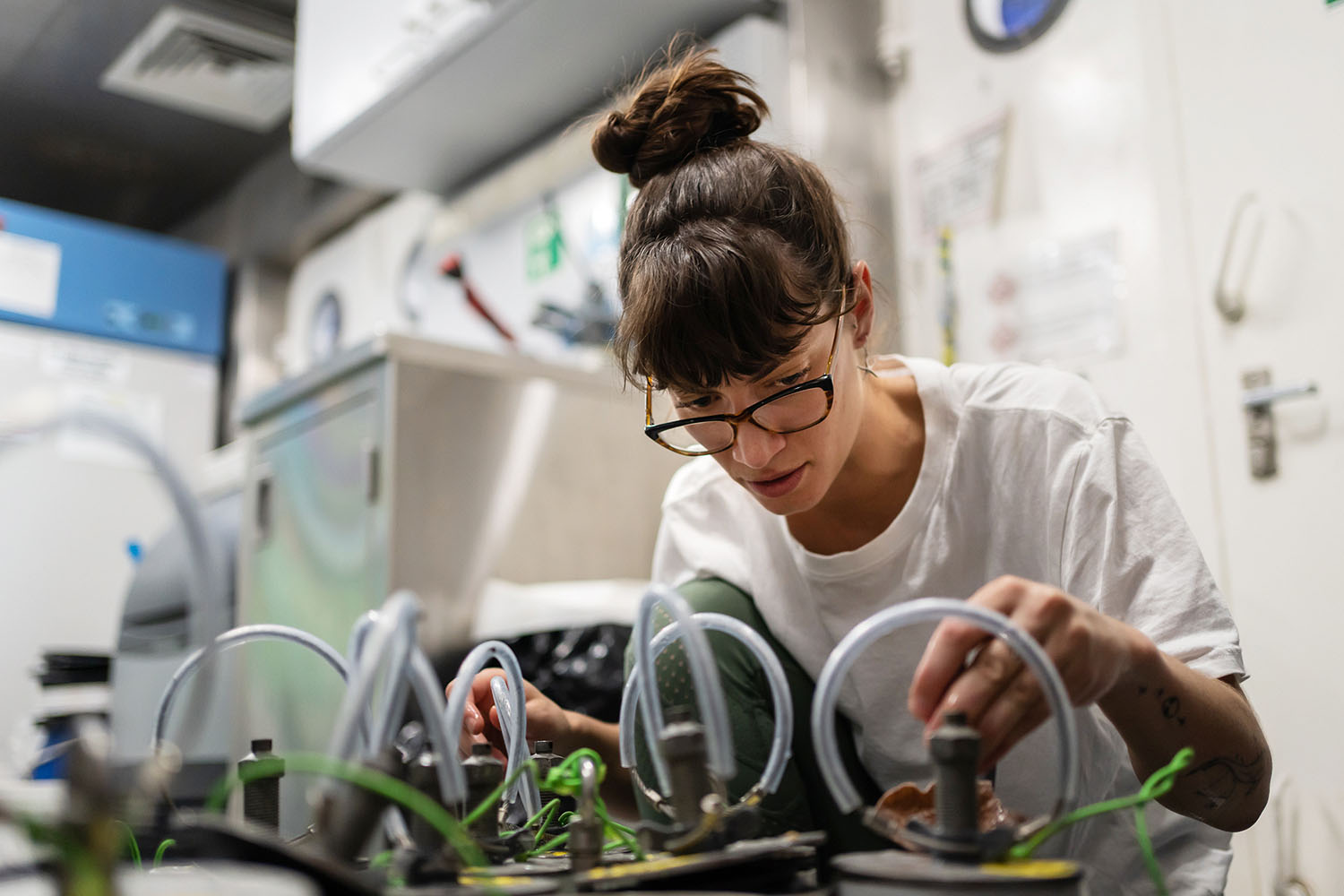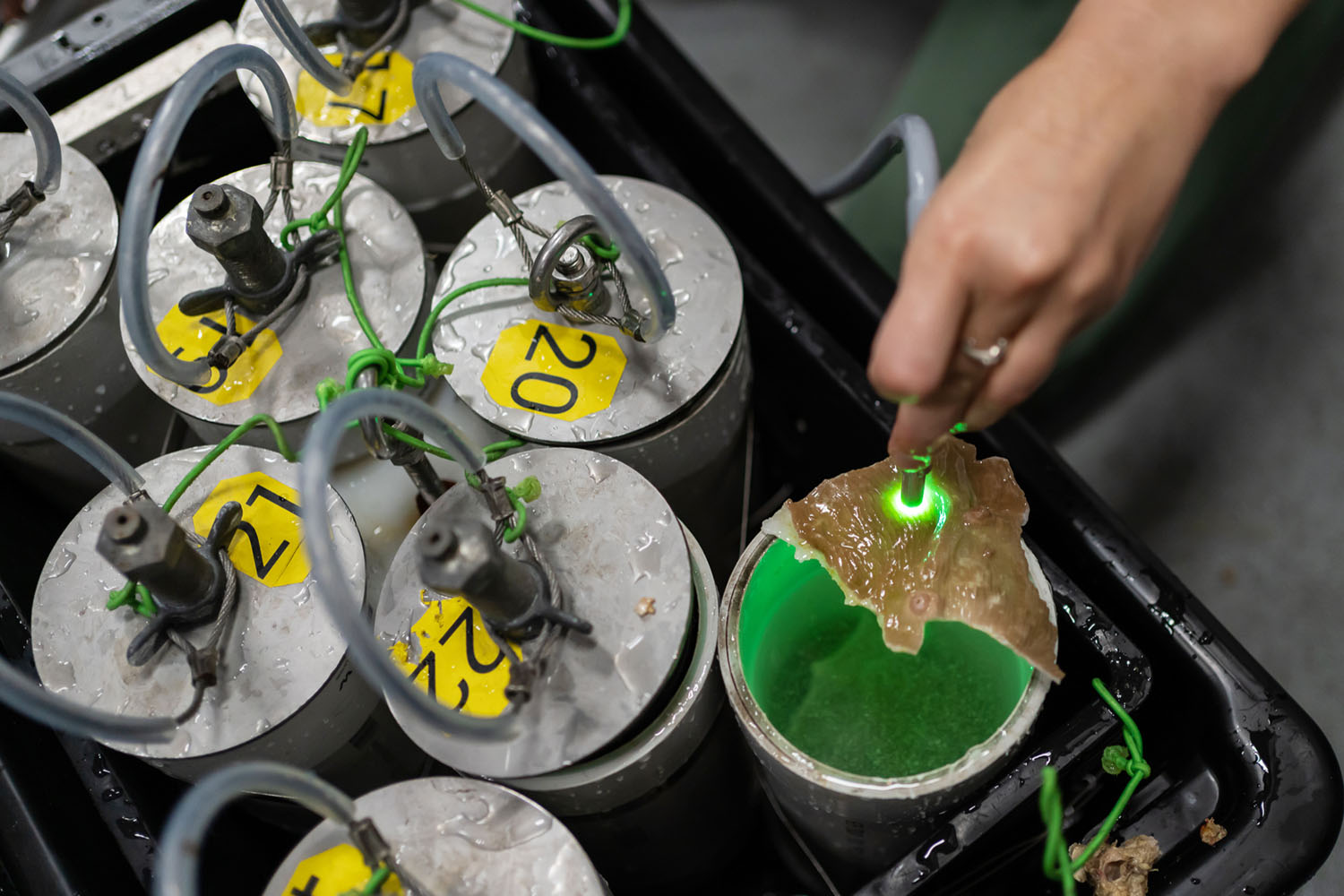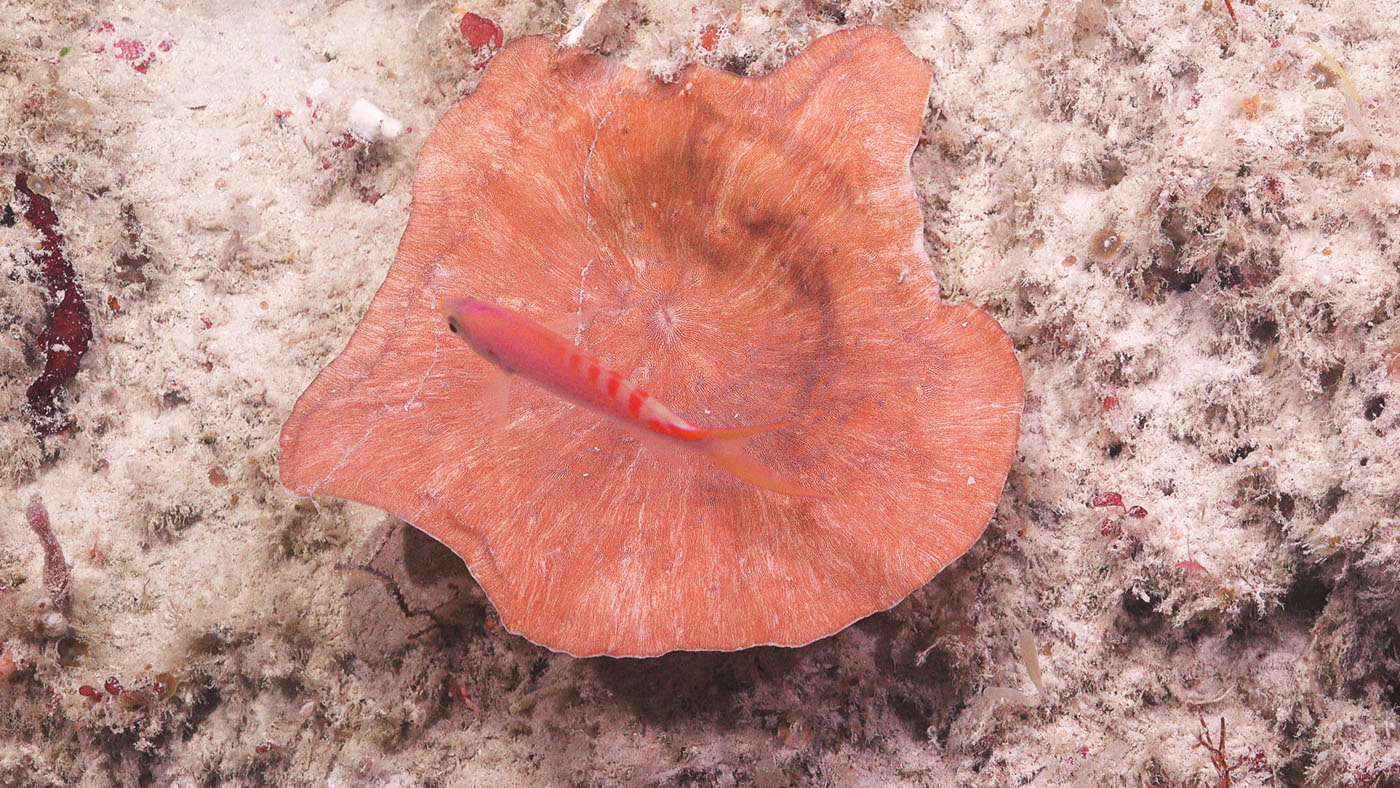I have known for some time that I wanted to be involved in coral research. I love diving underwater and entering that vibrant, alien-like world. I am naturally overcurious, passionate, and determined to solve the mysteries of our world’s threatened ecosystems. Chasing those extraordinary experiences has always been my thing, so when my supervisor pitched the idea of researching the understudied Mesophotic Coral Ecosystems on a world-class science vessel, there was no way I was passing on that opportunity.

Our adventure commenced in Darwin. The humidity reminded me of the tropical, south-east Asian waters I had visited before that catalyzed my passion today for coral reefs and conservation. After joining the rest of the science crew, which included field leaders Dr Karen Miller and Dr Nerida Wilson, we ventured to the port and met our floating home for the next few weeks. Joining the R/V Falkor did not disappoint. Firstly, the vessel is themed around the nostalgic childhood movie ‘The Never-Ending Story,’ with its sidekick ROV SuBastian and boats Atreyu and Auryn, so naturally, it already held a special place in my heart. Secondly, the huge 83-meter vessel resembled more of a space ship than a boat, with two large, spherical structures standing amongst multiple levels of technical equipment and infrastructure. As the magnitude of the expedition quickly set in, I felt highly honoured to be a part of its science team.
The crew is nothing short of amazing and enabled a breezy transition into working on board. Following an excitement-building two-day steam out across the Timor Sea, ROV SuBastian was put to work. Within the first 48 hours, we had seen giant sponges, brightly coloured gorgonians, sea stars, nudibranchs, hydroids, black corals, a nautilus, and even sea snakes, which was an incredible find considering their population demise about 20 years ago.

For my research, I am looking at the ecophysiology of scleractinian corals. Those are the hard, reef-building corals that rely on microscopic algae living in their cells (zooxanthellae) to transform sunlight into food. As light attenuates with depth, it is poorly understood how these corals utilize their energy budgets for growth and reproduction in these environments. I want to analyse how deep the mesophotic corals at Ashmore Reef occur, whether they are reliant on autotrophy or heterotrophy for food, how morphological adaptations may differ between species and conspecifics of different depths and importantly, whether the corals are currently reproductive. I was not expecting to find many corals below 50 metres. However, several colonies form the depth-specialist genus ‘Leptoseris’ started appearing around 65 metres on our first dive! This positively boosted my expectations for the rest of the expedition.

Working in the lab is a fast-paced, systematic, fun, often manic process, ensuring each specimen is treated correctly with the appropriate data accurately recorded. My first process is measuring the fluorescence levels of the corals using a Pulse Amplifier Modulator Fluorometer. I then take DNA and tissue samples for the West Australian Museum before drying out a skeletal sample for taxonomic identification. A cleaned coral subsample is frozen for isotopic analysis, and lastly, a larger tissue fragment is fixed in formalin for histological analysis. This will allow me to closely analyse the coral tissue and comparatively examine nanostructures and cellular components of the polyps. Schmidt Ocean Institute has provided me with access to resources that are incomparable to anything I have worked with previously, including scientific equipment and professional personnel on board.
All aspects of this expedition are ones I will never forget, (very) late nights in the lab, to picturesque sunsets on the top deck. This experience has been pivotal for my career, not only in expanding my knowledge and skills in scientific research but also for the connections I have developed, both personally and professionally. Opportunities for students such as this one provided by Schmidt Ocean Institute are significant in growing the minds and skills of budding scientists and preparing the next generation of researchers for addressing the modern issues surrounding environmental conservation that are imperative to the future health of our global ecosystems.


